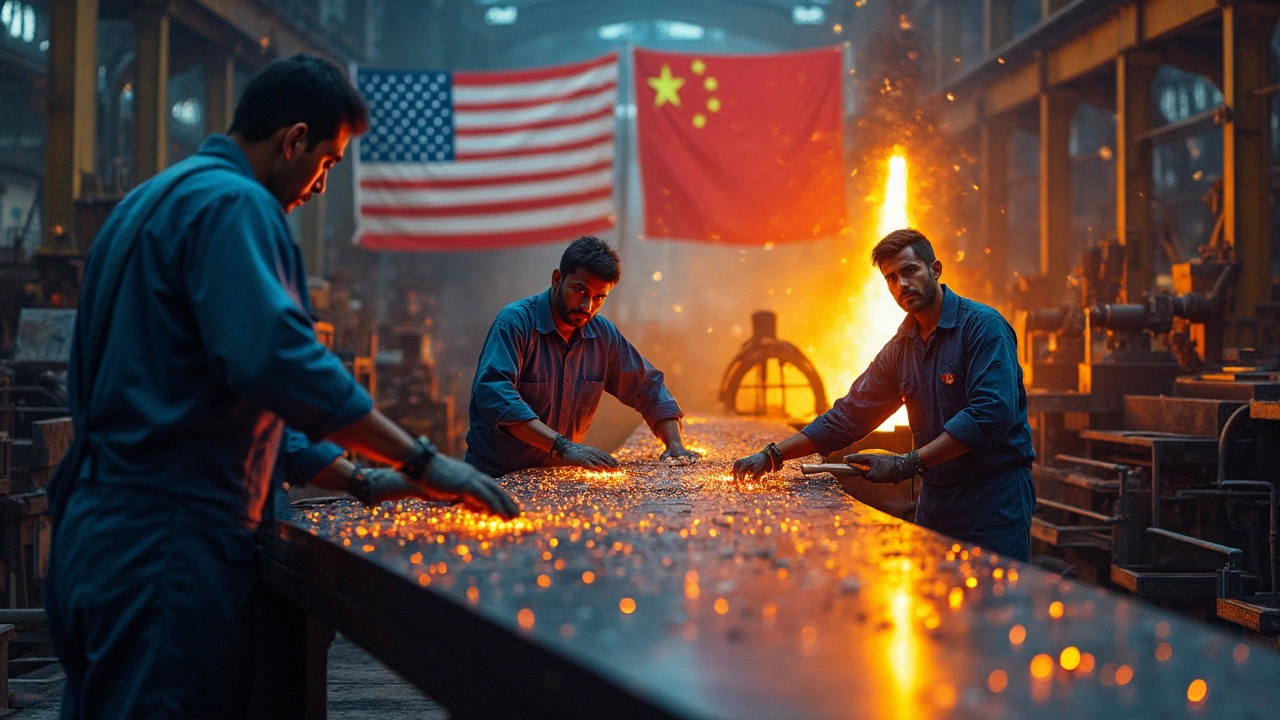- Top 10 Best-Selling Manufactured Products in the United States Jan 3, 2025
- Most Popular Small Business in Manufacturing: What's Leading the Pack? Mar 16, 2025
- Understanding Manufacturing's Place in Government Schemes Dec 2, 2024
- Who Is the World’s Manufacturing Capital? A 2025 Deep Dive Oct 22, 2025
- Pittsburgh: The Steel Making Capital of the US – History, Facts & Impact Jul 14, 2025
China Insights: Why the Country Matters for Global Manufacturing
If you run a factory, sell products, or source parts, China is probably on your mind. The nation produces more than 30 % of the world’s goods, and its factories keep millions of jobs alive. Knowing what drives that output helps you spot opportunities and avoid pitfalls.
China’s Manufacturing Powerhouse
First, size matters. China has the biggest workforce in the world and a network of factories that span from electronics in Shenzhen to textiles in Guangdong. The government supports the sector with tax breaks, cheap land, and fast‑track permits, so new plants can start quickly.
Second, technology is catching up fast. Many factories now use robots, AI‑driven quality checks, and cloud‑based inventory tools. That means higher precision, lower scrap rates, and faster turnaround. If you partner with a Chinese supplier that’s invested in automation, you’ll often get tighter tolerances and more consistent deliveries.
Third, cost still plays a role, but the picture is changing. Labor wages have risen in major hubs, yet overall production costs stay competitive because of scale, efficient logistics, and abundant raw materials. Keep an eye on regions like inland provinces where wages are lower and infrastructure is improving.
Trade Links and Opportunities
China’s ports handle a massive share of global container traffic. Shanghai, Ningbo, and Shenzhen rank among the busiest in the world, so shipping times are short and schedules reliable. When you plan a shipment, check the port’s congestion level – a busy day can add a week to delivery.
Customs rules have become clearer in recent years. The “single window” system lets exporters submit documents online, cutting paperwork and speeding clearance. Working with a local freight forwarder who knows the digital platform can shave days off the process.
Trade agreements also affect pricing. The Regional Comprehensive Economic Partnership (RCEP) lowered tariffs for many Asian markets, making Chinese-made goods cheaper in Southeast Asia and Oceania. If your target market falls within RCEP, sourcing from China might give you a price edge.
Finally, sustainability is gaining traction. Chinese manufacturers are adopting greener processes to meet both local regulations and international buyer demands. Look for suppliers with ISO 14001 certification or renewable‑energy commitments – they can help you meet your own ESG goals.
In short, China offers a blend of scale, tech, and trade advantages that still matter in 2025. Stay updated on wage trends, port activity, and sustainability moves, and you’ll be better positioned to make the most of the country’s manufacturing ecosystem.
Does China Buy Steel from the US? Shocking Facts Steel Manufacturers Should Know
- Aarav Sekhar
- May 21, 2025
This article digs into whether China, a steel giant, actually buys steel from the US. It unpacks why steel trade flows the way it does, which types of steel get shipped, and how tariffs and politics shape the industry. If you run or work in steel manufacturing, you’ll get practical tips on navigating international markets and what this tension means for your business. Get ready for some myth-busting and practical insights on a topic the news rarely explains clearly.
